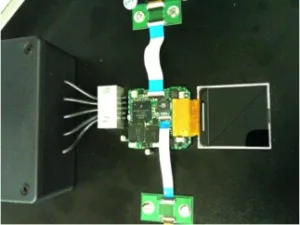ESCATEC faced a challenge when trying to devise a means of automatically testing LCD displays.
“We found that the LCD displays had strange patterns on them,” said Thomas Eschenmoser, ESCATEC’s Section Head Test Engineering. “We worked out that these are Moire patterns caused by an interference between the images on the arrays in the LCD and in the image sensor in the camera.”
Any slight angle of difference between the arrays resulted in a Moire pattern, which meant that the camera could not be used to automatically verify that the LCD output was correct, so it had to be checked by an operator.
However, after experimenting, it was found that by offsetting the two by 45 degrees, the Moire pattern was very predictable. It was therefore easy to test that the LCD display was working correctly.
“Every test that we can do automatically reduces the time taken to manufacture a product and reduces the human cost element in production, enabling us to be globally competitive despite being in a high labour cost country,” added Eschenmoser.
The same lightproof enclosure is also used for automatic testing of LEDs. High-quality fibre optic cables conduct the output of the LEDs to a Feasa LED Analyser where the colour and brightness of each LED is checked. ESCATEChas found that this automation has reduced testing times per LED by 90%. This solution enables ESCATEC to qualify the LED instead of just knowing if the LED turns on.

